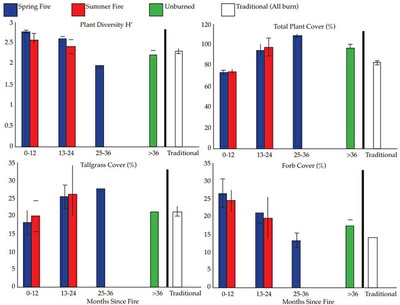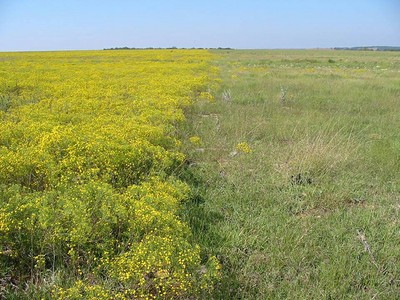Vegetation Benefits
Patch burning through preferential grazing of burned patches promotes a diversity of plant species (Figure 4). An abundance of forbs (broadleaf herbaceous plants) can be expected to increase following the fire and heavy grazing pressure of focal grazing for several years following burning. Forbs contribute an important element to wildlife habitat, as well as benefits to livestock. Given time to recover from focal grazing, the forb community changes (Figure 4).
Increases in some invasive plant species can be constrained by either intense grazing or growing season burns. This has been demonstrated in research with sericea lespedeza (Lespedeza cuneata) in tallgrass prairie (see invasive plants section).
Figure 4. Plant diversity, total plant cover, tallgrass cover, and forb cover is greater for PB than the traditional management practice of grazing and burning the entire pasture.
Caption: The patch on the left was burned in September of 2002, the patch on the right was burned March of 2003 and the picture was taken in September of 2003 showing the variation of plants created by patch burning and grazing. Photo Bob Hamilton.


